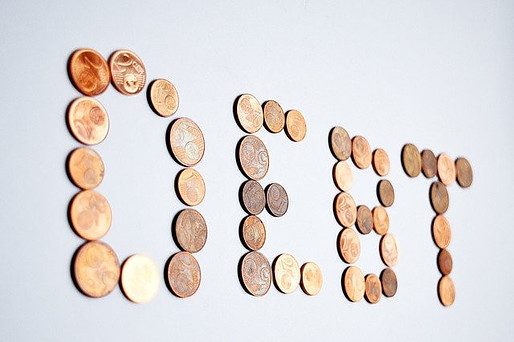What is debt avalanche method? When it comes to tackling debt, there are several different methods you can choose from. In an earlier post, we tackled the Debt Snowball Method.
Today, we will answer what is debt avalanche method and how this debt consolidation plan can be used to get you on the path to financial freedom. 
Paying off your debt may seem like a
daunting task, but once you create a plan, that goal will begin to seem more achievable.
Here at Five Bags of Gold, we love the Debt Avalanche Method because it allows you to save the most money in the long run.
How Does the Debt Avalanche Method
Work?
With the Debt Avalanche Method, you focus on getting rid of the debt with the highest interest rate first, as it is costing you the most money. It’s as simple as that.
To implement the Debt Avalanche Method, follow these steps:
Step 1: Create a List of All of Your
Debts
Make sure you are including the name of the company you owe, the total amount owed, the minimum payment due, and the current interest rate.
We actually have a line of Budget Planners for sale on Amazon with debt worksheets inside that you can use to do this.
Step 2: Identify the Debt With the Highest Interest Rate
Let’s say you have the following debts:
Debt A – $1,000 owed, $10 minimum payment, 8% APR.
Debt B – $10,000 owed, $100 minimum payment, 5% APR.
Debt C – $5,000 owed, $50 minimum payment, 23% APR.
You can see that Debt C has the highest interest rate, so you’ll want to tackle that debt first, even though Debt A has a lower overall balance.
Step 3: Organize Your Payments
With this debt consolidation plan, you want to pay the minimum balance due on all of your debts, except the debt with the highest interest rate.
So in the example above, you’d pay $10 toward Debt A and $100 toward Debt B. You are tackling Debt C first, so you will need to pay more than the minimum payment of $50.
As long as you have an emergency savings account established, you should be throwing every extra cent toward Debt C until it is completely paid off.
I highly suggest taking on a part-time job or side gig to help you eliminate your debt faster. This extra job is just temporary and designed to help you meet your goals.
Step 4: Switch to the Debt With the
Next Highest Interest Rate
As soon as you pay off the debt with the highest interest rate, revisit your list of debts and identify the debt that now has the highest interest rate.
In our example, that would be Debt A.
Continue making the minimum payment due for all debts, except the debt you are now tackling.
In our example, you’d continue to pay $100 a month toward Debt B.
Add the minimum payment you had been making toward the debt you are now tackling to the amount you were contributing to the debt you just paid off.
That means, if you were paying $300 a month toward Debt C, which is now paid off, you’d add that $300 to the minimum payment you were making on Debt A ($10) for a total of $310.
Continue paying this amount until your debt is paid in full (Debt A in our example).
Step 5: Repeat Until All Debts Are Paid Off
Using our example, you’d only have Debt B left once you finished paying off Debt A.
Repeating the steps above, you’d add the $310 a month you were sending Debt A to the $100 minimum of Debt B for a total of $410.
Continue paying that $410 each month until Debt B has been satisfied. Once Debt B is paid off, you are officially debt-free!
Conclusion to What is Debt Avalanche Method
Paying off your debts is just the beginning of your journey to financial freedom. You need to change your habits, so you don’t begin overspending and ending up in debt again.
Check out our YouTube Videos and additional blog posts here on our site for more information on how you can keep up the momentum, add to your savings, prepare for retirement and win with money!


Hi Alicia, thanks for your post on the avalanche method of debt reduction. Managing your finances is, in my opinion, something that should be taught in school. With no training, it is so easy to get caught in the cycle of never-ending debt repayment. It is good to have a plan in place to know how to tackle debt and then know how to change your spending habits to stay out of debt in the future.
I totally agree! Schools are lacking big time in this area. Young adults can get caught up in debt easily. Hopefully, this technique will help many climb out of that debt!